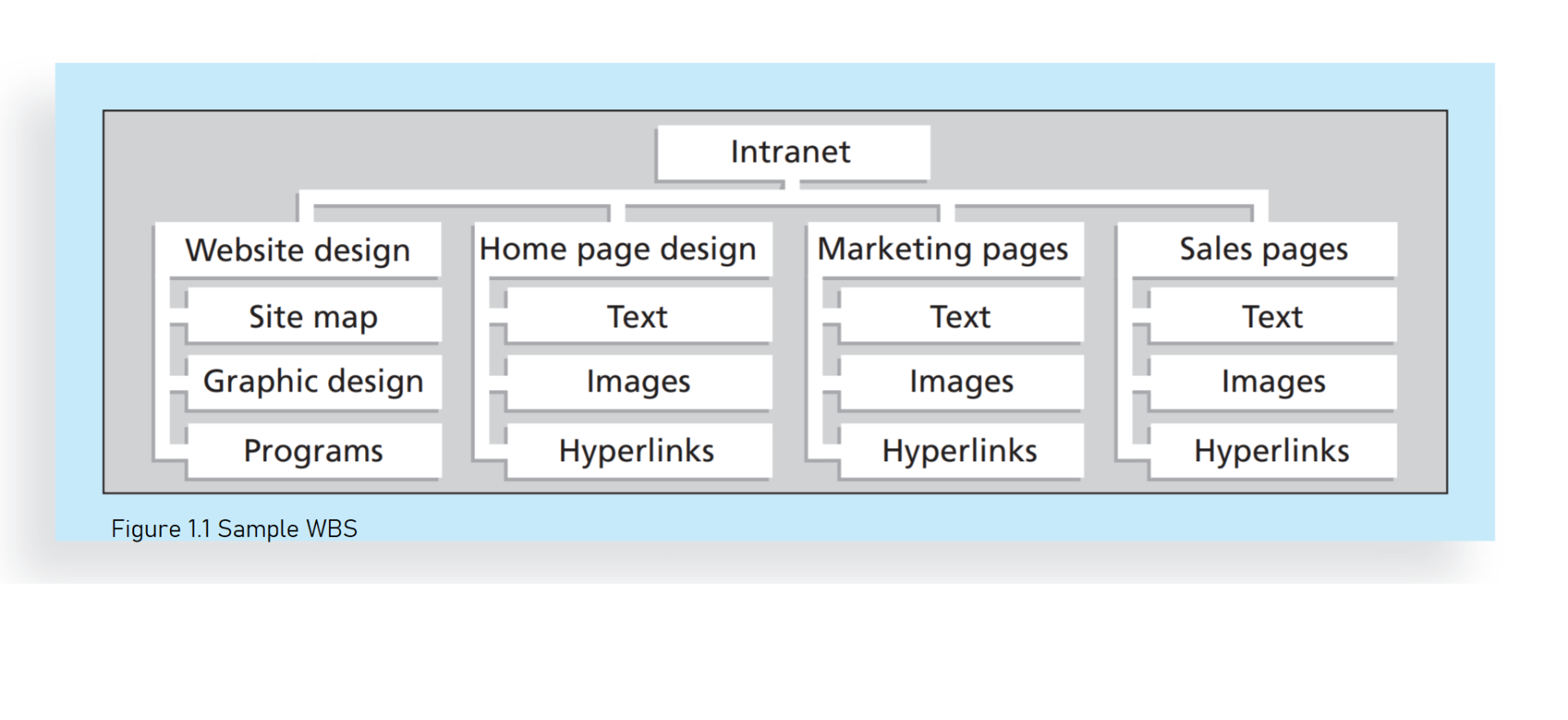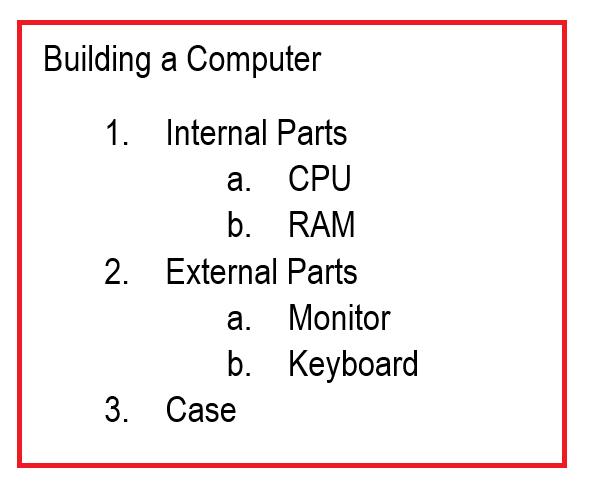The Ins and Outs of a Work Breakdown Structure (WBS)
What is a Work Breakdown Structure?
In project management, a Work Breakdown Structure, is a tool used to help you plan, manage, and structure large projects. It may sound simple and easy; however, it is a very powerful tool that many organizations use in their projects. To further demonstrate just how a Work Breakdown Structure works, the rest of the blog will speak in detail the whys, tips, and the different approaches and formats of a Work Breakdown Structure.
How does a Work Breakdown Structure work?
a Work Breakdown Structure works by breaking down a large project into many smaller pieces that can then be reasonably assigned to teams to tackle on. So rather than focusing on individual actions, a Work Breakdown Structure focuses on tangible concrete deliverables that act as a milestone.
These deliverables are also called work packages, or sub-tasks. A work package is simply defined as a task in the lowest level of a Work Breakdown Structure. A Work Breakdown Structure looks something like this:

Why Would You Use a Work Breakdown Structure in Project Management?
There are many benefits associated with creating and applying a Work Breakdown Structure to a project. These include the following:
- Estimating the costs involved in a project.
- Tracking Progress of a project
- Being able to assign responsibilities and roles.
How to create a Work Breakdown Structure:
1) Identify the end goal of the project.
2) Divide the goal into smaller chunks and remember to focus on physical deliverables that can act as a small milestone.
3) If necessary, start dividing the smaller tasks into subtasks. However, make sure to stop dividing when the tasks get too basic and simple.
Tips for Making a Good Work Breakdown Structure:
1) Estimates of Work Time:
When using project management software, the amount of work time should only be applied to the work package level.
2) Understanding the difference between specifications and tasks
Specifications describe how a goal can be accomplished listing out requirements, however WBS focuses on tasks or the goals themselves. Tasks should list out what should be accomplished but not how it should be accomplished.
3) Total Scope:
Many project managers say that a WBS should define the total scope of the project, as such it is important to include ALL work needed to accomplish the end goal.
4) Organization of Work Breakdown Structure:
When trying to organize a big end goal into smaller chunks, it is important to focus on what work needs to be done, and how it will be executed, but not the time it will take to accomplish. Even when you are trying to use a software management software to set a work time for work packages, it is not a defining characteristic but a helpful reminder.
Approaches to Developing a Work Breakdown Structure:
When creating a Work Breakdown Structure, there are many different approaches you can take to create one. Listed below are the many ways you can utilize to create your own Work Breakdown Structure.
1) Using Guidelines Approach:
Many establishments and organizations already provide the essential guidelines and templates for developing a Work Breakdown Structure. That is why it is important to review your company's Work Breakdown Structure guidelines, templates, and other related information before you start to create your own Work Breakdown Structure. In addition, it is helpful to know that the organization PMI, has already developed a Practice Standard to provide guidance for developing and applying Work Breakdowns Structures.
2) The Analogy Approach:
The analogy approach is quite simple in that you use a similar project's Work Breakdown Structure as a starting point. It is that simple! By not needing to start from scratch, you save a lot of time, resources, and energy when you need to create another Work Breakdown Structure for another project. Some organizations keep a record of all their Work Breakdown Structures and other project documentation on file to assist people reuse the files.
3) The Top-Down Approach:
A top-down approach starts with the largest and most important items of the project and break them into smaller sub items. However, this approach greatly refines each item into a more detailed and concise levels of detail. This approach is best suited for project managers who have a lot of experience and creativity in creating a Work Breakdown Structure.
4) The Bottom-Up Approach:
In the bottom-up approach, the project's team members first try to identify all the required tasks related to the project's creation. Next, they would group the tasks into sections or different levels to better organize it. For example, a group of people responsible for creating a social media app, will. lists out the detailed tasks that they think is needed to perform to create the application. After listing out the necessary tasks involved, the team then groups these tasks into categories.
5) The Mind Mapping Approach:
The mind mapping approach is a technique where the emphasis is placed on creating branches from the core idea to then structure thoughts. So instead of writing down tasks, and then grouping them based on similarity, with mind mapping one would write and even draw pictures of ideas in a nonlinear format. This approach requires the greatest amount of creativity because the more visuals involved, the better the mind mapping approach. This kind of approach is unique in that there are more visuals than words.
Different Work Breakdown Structure Formats:
Outline structure:
The outline structure is the simplest format. It includes a hierarchy of tasks divided into sub tasks. However, it is quite difficult to include additional information. This additional information could include time constraint, budget, or even a simple description.

WBS Dictionary:
A WBS dictionary is a format in which there are additional information associated with each task. This is quite helpful because each description is tied to a task so that one would not get confused with the huge number of tasks on the graph.

Sources:
Chapter 5 of Information Technology Project Management 8e by Kathy Schwalbe.
https://www.lucidchart.com/blog/how-to-create-a-work-breakdown-structure-and-why-you-should